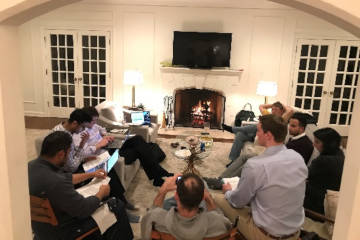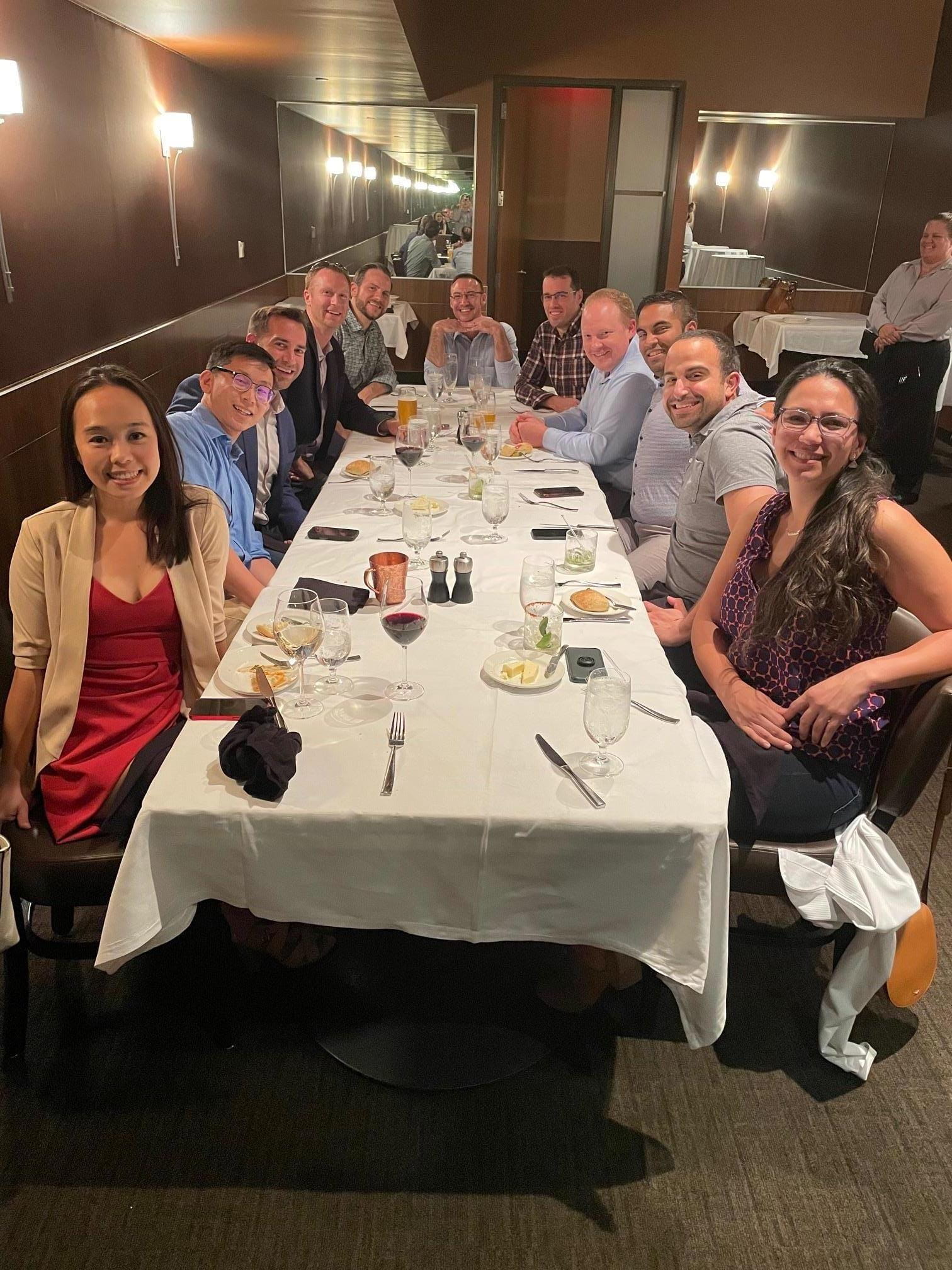Fellows share accountability for multiple education-related events. These include daily pre-/post-operative conference, weekly trauma-specific lectures, journal clubs and the monthly morbidity and mortality conference. There is a comprehensive year-long didactic schedule covering all aspects of orthopaedic trauma pathology and care.
Fracture Conference
A daily preoperative/postoperative fracture conference is held from 6:30-7:30 a.m. and forms the foundation of the fellowship educational mission. Preoperative plans are explored in depth, including approach, reduction strategies, fixation sequence, alternative treatment options and postoperative protocols. Postoperative radiographs are subjected to daily peer review, execution tactics are discussed in detail, and pertinent literature is reviewed.
Journal Club and Morbidity & Mortality Conference
Fellows are responsible for accumulating three to four articles from peer-reviewed journals for discussion at a monthly journal club. Journal club is frequently held at faculty members’ homes. Although the journal club is specific to orthopaedic trauma, other faculty, residents and medical students are invited to the well-attended event. The department’s morbidity and mortality meeting is also held monthly.

Indications Conference
Fellows are responsible for the content of a monthly indications conference, held for one hour on Tuesday mornings. Fellows are encouraged to present controversial topics in the style of the ABOS Part II oral exam so that fellows get sufficient practice and case presentation tips.
Research Conference
A monthly research conference provides faculty and fellows an opportunity to discuss ongoing research projects. Presentations range from retrospective chart reviews to multicenter randomized controlled trials. This dedicated time helps fellows keep pace towards completion of their research project and provides regular review of progress.
Multidisciplinary Conference
Fellows also attend a monthly multidisciplinary review conference with multiple hospital services, including general surgery trauma, neurosurgery, anesthesia and emergency medicine.
Wednesday mornings are protected educational time reserved for scientific and clinical didactic presentations that cover a comprehensive year-long curriculum. In addition to injury-focused grand rounds, other topics covered include care of the multiply injured orthopaedic trauma patients, pain management in orthopaedic trauma, the economics of health care and more.

Orthopaedic Trauma Cadaver Labs
An on-site cadaver lab is held several times a year, with each session taught by one or two faculty members. These labs include acetabulum and pelvis dissection and percutaneous fixation with fluoroscopy; shoulder and elbow; knee, including distal femur and proximal tibia; and foot and ankle.

Protected Time
Fellows have protected research time from 1-5 p.m. once weekly. The weekday rotates monthly based on clinic schedules.
National Courses
Each fellow attends the annual Orthopedic Trauma Association Meeting, one of the annual pelvic dissection courses and one of the Orthopaedic Trauma Fellows’ courses.